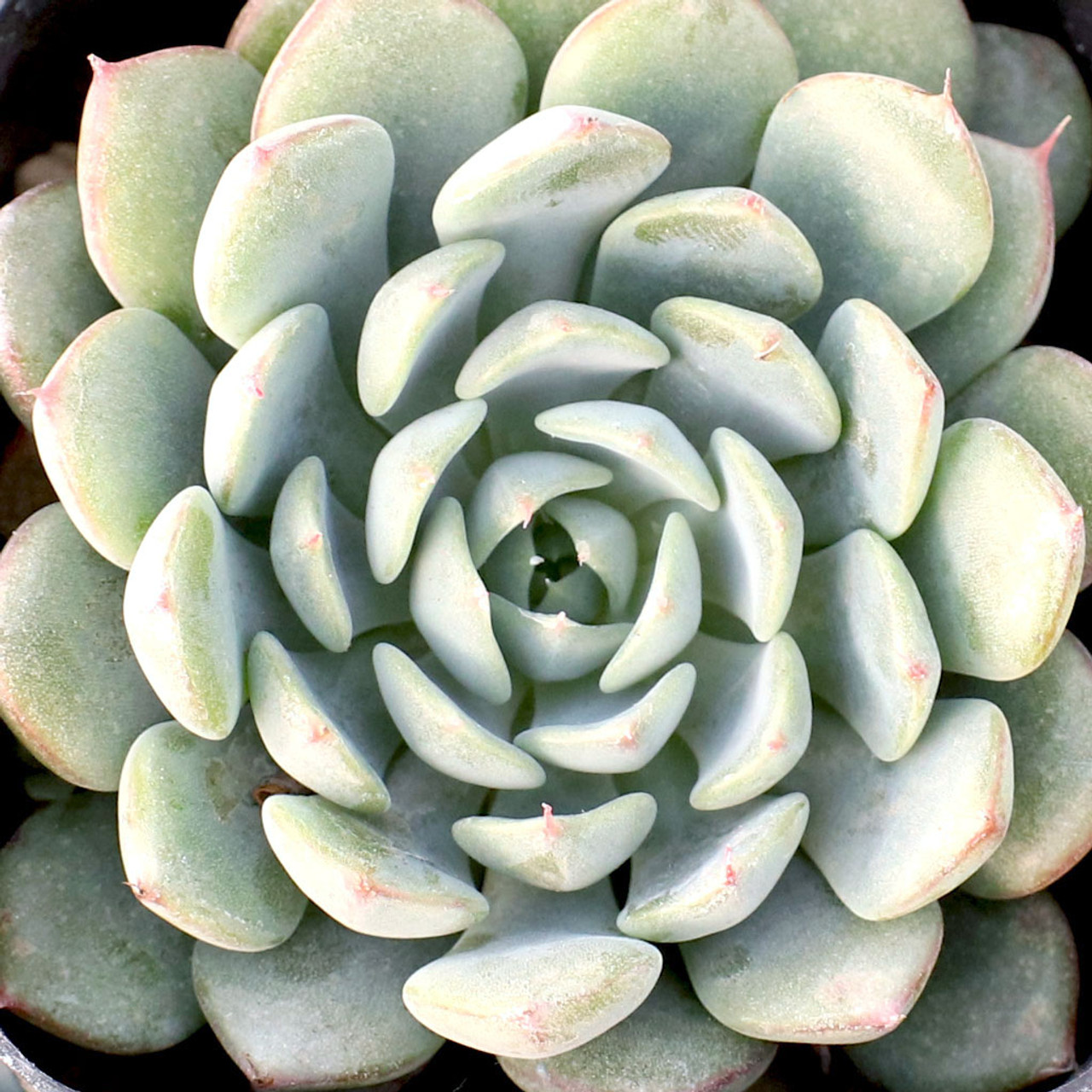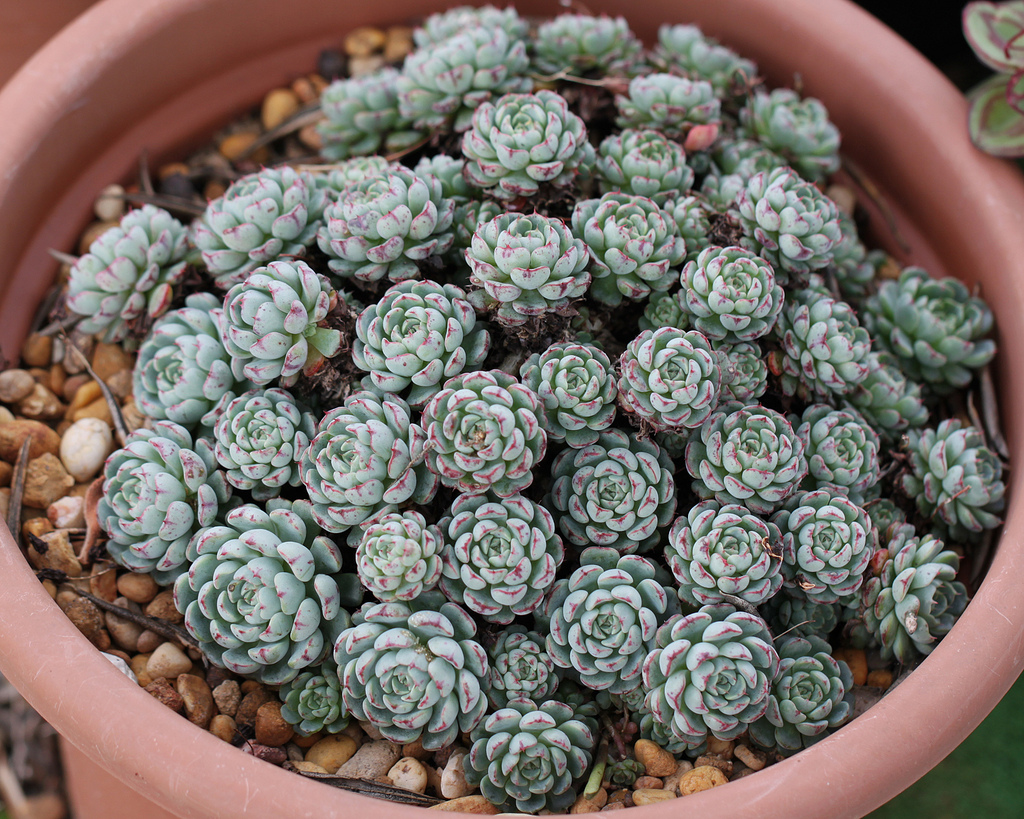This succulent has a tight blue-green rosette. When exposed to the right amount of stress, the leaves have a pinkish hue. It tends to grow in groups. Look out for its yellow bell-shaped flowers that bloom in the springtime.
Table of Contents
Care and Propagation Information
Echeveria minima is an attractive addition to any outdoor landscape, providing vivid hues throughout the year. It can be planted directly in the soil or grown in a pot.
Watering
Echeveria minima requires the same watering regimen as most other succulents, which involves the “soak and dry” technique. It is important to allow the soil to dry out completely in between watering sessions.
Where to Plant
Echeveria minima is better suited for indoor than outdoor planting in areas with cold temperatures below 20° F (-6.7° C). It prefers full to partial sun exposure, and should be placed in a pot that can be moved inside when temperatures drop.
How to Propagate Echeveria minima
Echeveria minimacan be reproduced by taking cuttings from offsets or leaves.
Offsets
Echeveria minima will generate baby plants that appear near the bottom of the mature plant. Gently remove these and let them dry out for one or two days before planting them in a new location.
Leaves
To propagate Echeveria minima, twist off a leaf from the mother plant and make sure that none of the leaf is left on the stem. This will increase the likelihood of success.
Let the leaf dry for a few days until the cut end is sealed, then place it in soil that drains well. Water only when the soil is completely dry.
Care and Propagation Information
General Care for Echeveria minima
Watering
Echeveria minima requires the same watering regimen as most other succulents, which involves the “soak and dry” technique. It is important to allow the soil to dry out completely in between watering sessions.
Where to Plant
Echeveria minima is better suited for indoor than outdoor planting in areas with cold temperatures below 20° F (-6.7° C). It prefers full to partial sun exposure, and should be placed in a pot that can be moved inside when temperatures drop.
How to Propagate Echeveria minima
Echeveria minimacan be reproduced by taking cuttings from offsets or leaves.
Offsets
Echeveria minima will generate baby plants that appear near the bottom of the mature plant. Gently remove these and let them dry out for one or two days before planting them in a new location.
Leaves
To propagate Echeveria minima, twist off a leaf from the mother plant and make sure that none of the leaf is left on the stem. This will increase the likelihood of success.
Let the leaf dry for a few days until the cut end is sealed, then place it in soil that drains well. Water only when the soil is completely dry.
FAQ
What is the scientific name for Echeveria purple pearl?
What is Perle von Nurnberg botanical name?
Temperature 70°F – 80°F (21°C – 27°C)
Soil Well-drained soil
Water Moderate water
The Perle von Nürnberg, or Pearl of Nurnberg, is a species of Echeveria plant in the Crassulaceae family. It grows to be about 5 inches tall and 6 inches wide, and prefers full to partial sun, temperatures of 70°F to 80°F (21°C to 27°C), and a well-drained soil with moderate water.
What is the most colorful Echeveria?
If you’re searching for a stunning succulent with a truly unique hue, consider the Echeveria ‘Wine Red’ variety. Its whole plant can transform into a beautiful, deep red wine color, making it a rare and sought-after selection. Get one for yourself and enjoy the vivid colors!
What is the most beautiful Echeveria?
Echeveria perle von Nurnberg is an iconic type of echeveria, recognizable by its singular cluster of paddle-like, pastel leaves. When placed in shady areas, the leaves take on a grayish tone, while in direct sunlight they become vibrant shades of pink and purple.
Is Echeveria lilacina the same as Perle von Nurnberg?
Reworded: To change the words of something without changing the meaning.



